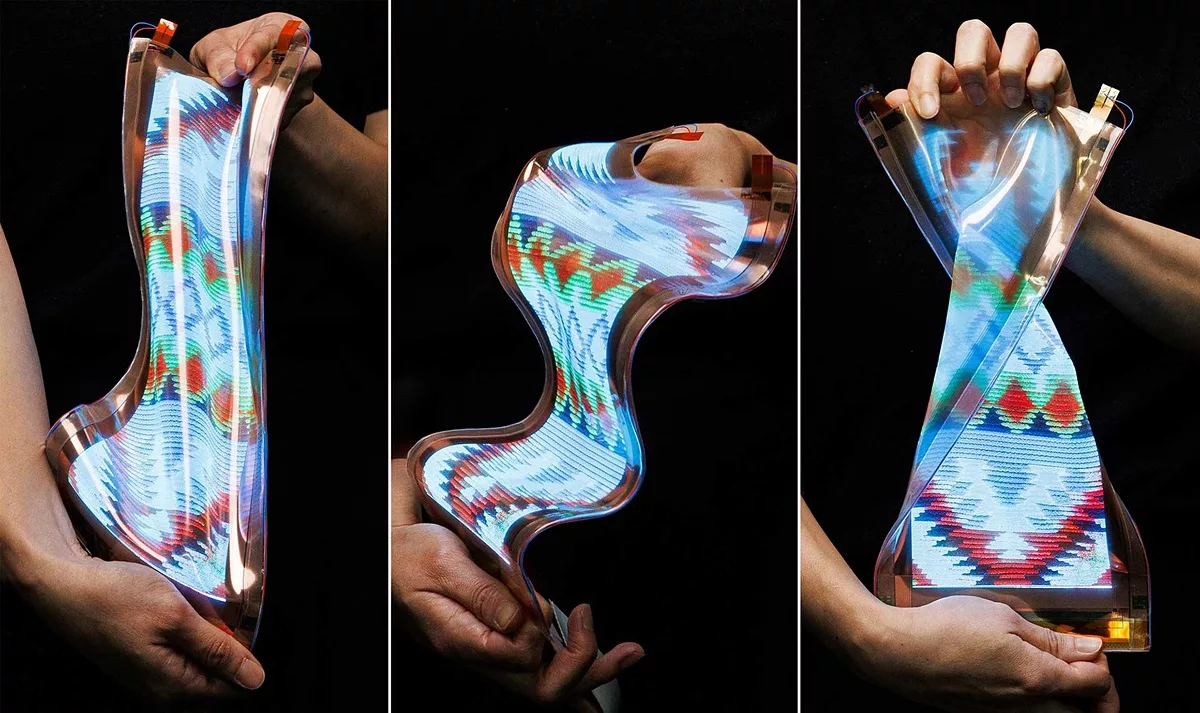LG has recently introduced a revolutionary stretchable display technology, marking a significant leap forward in the world of flexible screens. This new tech can expand by up to 50%, offering potential applications across various industries from automotive to fashion.
Table of Contents
LG’s latest innovation in display technology is a 12-inch prototype that can stretch to 18 inches. This isn’t just any screen; it boasts a high resolution of 100 pixels per inch (ppi) and supports full RGB color, ensuring that even when expanded, the quality remains top-notch.
How LG’s Stretchable Display Technology Works
The secret behind LG’s stretchable display lies in its use of a special silicon substrate, akin to the material used in contact lenses. This substrate provides the screen with elasticity, allowing it to stretch, fold, or twist without damage. The display’s durability is enhanced by employing micro-LEDs with a pixel pitch of up to 40 micrometers, which maintain clarity even under extreme conditions. LG claims this technology can handle being stretched over 10,000 times without any degradation in quality.
Possible Applications of LG’s Stretchable Display Technology
- Fashion and Wearables: Imagine clothing or accessories that not only look stylish but can also display information or change patterns. LG’s stretchable display could be integrated into fabrics, offering dynamic displays on clothing for communication or style.
- Automotive Industry: Car dashboards could become interactive surfaces where touch-sensitive areas change shape to provide tactile feedback, making vehicle controls more intuitive.
- Medical Uses: For medical professionals, this could mean having critical data displayed directly on their uniforms, improving response times in emergencies.
- Gaming and Interactive Media: The technology could revolutionize gaming by allowing for more immersive and interactive environments, where the physical interaction with the display changes gameplay dynamics.
See also: OpenAI releases ChatGPT Search as a Google Competitor
Challenges and Considerations
While the technology is promising, there are challenges to overcome:
- Durability: Ensuring that the screen retains its functionality after repeated stretching is crucial.
- Commercialization: Transitioning from prototype to market-ready products involves scaling up production while managing costs.
- Integration: Fitting this technology into everyday products will require innovation in design and engineering to make it practical for widespread use.
Conclusion
LG’s stretchable display technology is setting the stage for a future where screens are not just flat and static but can adapt to our needs, environments, and even our bodies. While we might not see these stretchy screens in our gadgets tomorrow, the groundwork laid by LG could lead to a new era of interactive and adaptable technology. Keep an eye on this space as LG and other tech giants continue to push the boundaries of what displays can do.




























